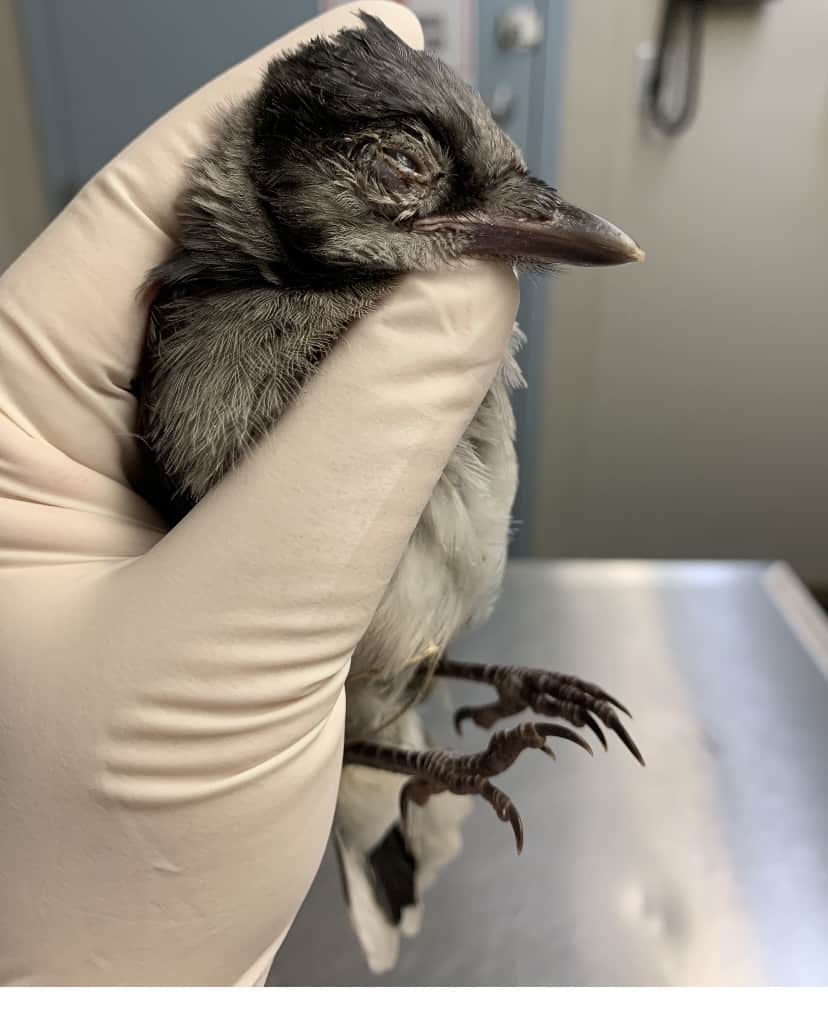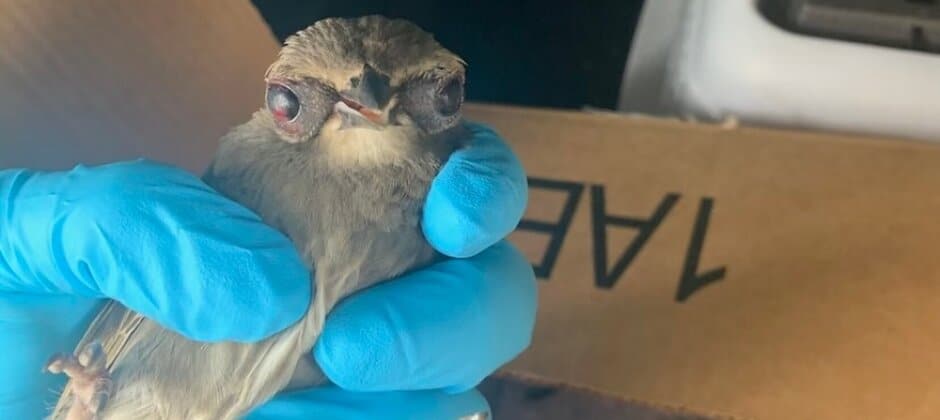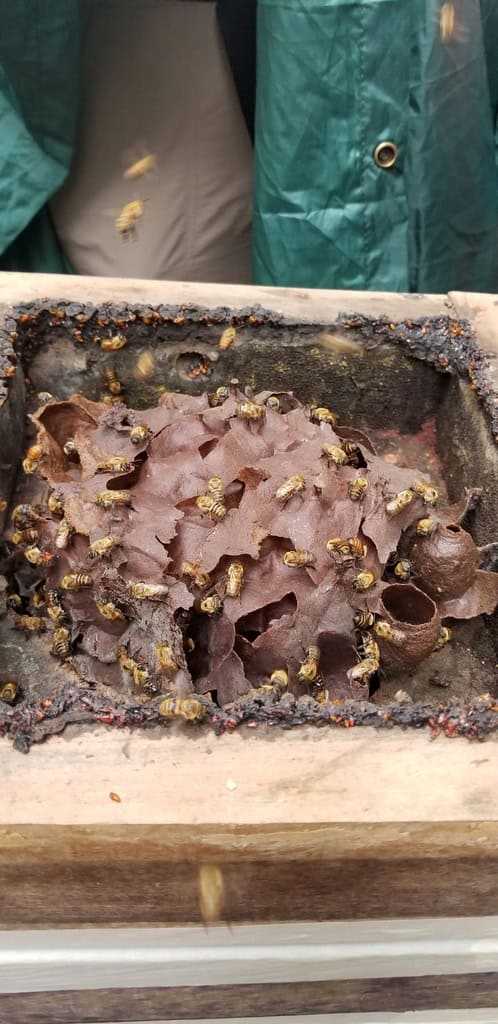Share this article
Mysterious bird blindness cases drop in D.C. area
A mysterious but deadly disease that causes blindness in blue jays, grackles, starlings and other birds in the Washington, D.C. area and nearby states is disappearing just as fast as it initially appeared.
“It’s definitely slowing down,” said Chelsea Jones, senior communications specialist with the Animal Welfare League of Arlington (AWLA).
The disease first began to afflict birds in late May in Washington, D.C., Virginia, Maryland, Kentucky and West Virginia. Wildlife managers from rehabilitation centers and agencies began receiving reports from the public of blind birds with a crusty discharge covering their eyes. The birds also had neurological symptoms—they couldn’t fly, and their heads were often bent toward the ground.
“They’d be alert, but they wouldn’t be able to fly,” Jones said, adding that the symptoms didn’t seem to match any known diseases. “Within the first couple of days, we knew that something strange was going on. We definitely started paying attention to those birds.”
Most of the birds affected were common grackles (Quiscalus quiscula), blue jays (Cyanocitta cristata) and European starlings (Sturnus vulgaris), though some other species were also affected.
The number of birds with this condition began increasing rapidly in May and June—Jones said that one day, the rehabilitation center took in 20 birds. Since the end of May, the AWLA has received more than 430 reports of birds that had died with visible symptoms of the novel disease. They also took in hundreds of birds at the Arlington, Va. facility in the Washington, D.C. suburbs.
“Unfortunately, since we don’t know what’s wrong with these birds, and we didn’t know how to treat them, a lot of these birds had to be euthanized,” Jones said, adding that they couldn’t be rereleased at risk of further spreading the infection.
The AWLA and other organizations advised people in affected areas to take down their bird feeders, as they might be vectors for the transmission of disease between birds.
Not too long after the mysterious illness began showing up in the D.C. area, birds with similar symptoms began turning up in Ohio. Birds affected there included many of the same species, but also sometimes affected mourning doves (Zenaida macroura), barn swallows (Hirundo rustica) and cedar waxwings (Bombycilla cedrorum), said Stormy Gibson, interim executive director at the Ohio Wildlife Center, one of the largest, donation-supported wildlife rehabilitation centers in the state.

Many grackles have contracted the bird blindness disease. Credit: Animal Welfare League of Arlington
Some facilities weren’t taking in wildlife with these symptoms for fear that other birds held there could be infected. The Ohio Wildlife Center took them in, but instituted a quarantine section that separated them from other animal patients. At the peak of the issue, the center was taking in about 12 birds a day.
The source of the disease is still unknown, but lab tests have led to the elimination of a number of known viruses and zoonotic diseases, including salmonella; chlamydia; avian influenza; West Nile and other flaviviruses; Newcastle disease and other paramyxoviruses; herpes and pox viruses; and Trichomonas parasites, according to the U.S. Geological Survey.
“We’ve been working with the national wildlife health center, and we haven’t confirmed anything, but we’ve ruled out a lot of things,” Gibson said.
But in more recent weeks, the Ohio Wildlife Center has seen decreased intake of birds with the disease as well. They are only getting one or two patients per day now. “We hope that it’s kind of waning,” Gibson said.
Some scientists believe there may be a link between the dead birds and the Brood X 17-year cyclical cicadas that also appeared around the time symptoms starting popping up in birds in the area.
“[Wildlife officials] have asked us to collect any deceased cicadas found near an injured bird,” Jones said, but so far no connection between the dead birds and cicadas has been discovered.
In the meantime, Gibson stressed how important it is for people to consider the OneHealth approach, which involves taking full account of the role ecological relationships, human health, and wildlife health has on the spread and emergence of zoonotic diseases.
“Our environment is all connected,” she said.
Header Image: A blue jay afflicted with the mysterious bird blindness disease. Credit: Animal Welfare League of Arlington








